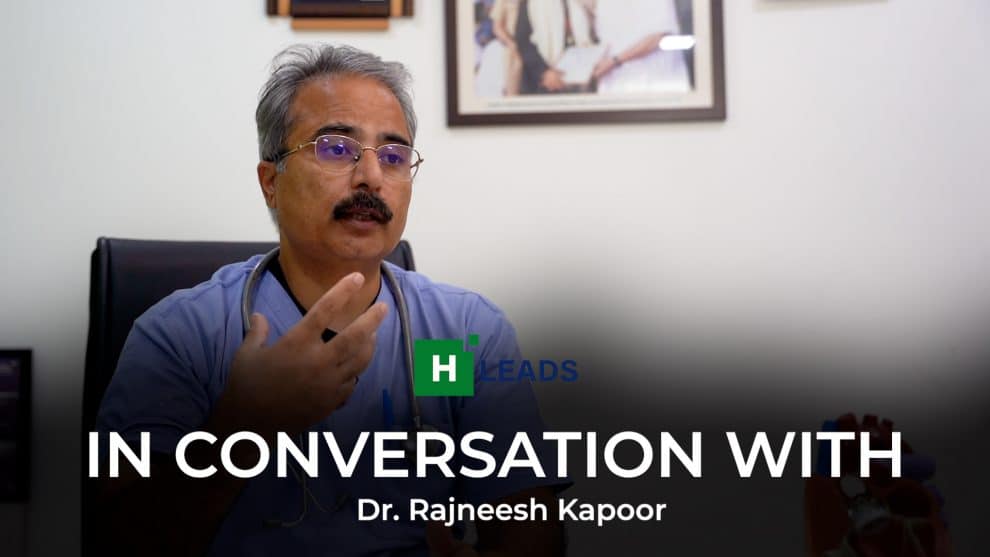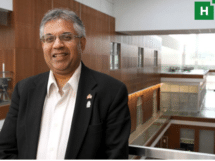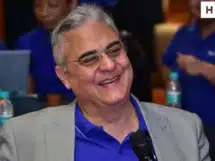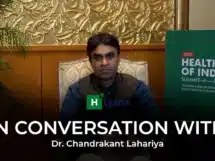Cardiovascular diseases (CVDs) have now become the leading cause of mortality in India. According to the Global Burden of Disease, nearly a quarter (24.8 percent) of all deaths in India are due to CVDs.
What’s worse is that heart disease, which was once common in older people, is now widespread in young people as well.
To learn more about the rising incidence of heart diseases and how technological advancements are reshaping the future of cardiology treatments in India, we spoke with Dr. Rajneesh Kapoor, Director of Interventional Cardiology at Medanta – The Medicity, on the occasion of World Heart Day.
Excerpts from the interview:
Please educate us about silent heart attacks. Also, what’s the difference between heart attack and cardiac arrest, because people often use the term interchangeably?
A silent heart attack has almost no symptoms or very minute symptoms which people usually ignore. An individual may experience something as minor as acidity or gas, which they may attribute to hyperacidity or some erratic eating, but that could be a heart attack. So how would someone know they had a silent heart attack? If an individual visits a cardiologist or a hospital and finds that their heart is not functioning well or their ECG reports indicate some changes, then it’s a sign the person had a silent heart attack.
Heart attack and cardiac arrest are different terms, although used interchangeably. A heart attack is a situation where one of the arteries of the heart supplying blood to the heart muscle gets occluded. While the patient may experience symptoms such as chest pain and discomfort or breathing discomfort or sweating, it does not mean they are having a cardiac arrest.
Cardiac arrest is a peculiar situation when the heart completely stops for a while. The patient, in this state, has to be salvaged within a few minutes, as otherwise, we lose a life.
What are the latest technological advancements in cardiology in India?
Cardiology is a branch where a lot of technological advances have happened in the last two decades, and they still keep happening. The latest is that now we are able to change the valves in the heart without any surgical incision. As a result, there’s no blood loss and no anaesthesia required. We go through the groin or wrist and change the diseased valve with the new one, which starts functioning immediately. So this is a very big revolution in cardiology treatment, and we are looking forward to many more technological advances in the coming days.
Despite medical advancements and improvements in diagnostics, India has witnessed an alarming rise in the number of deaths owing to heart diseases. Where do you think we are going wrong?
We keep boasting and lecturing that infrastructurally and technically we are very well off and at par with the western population, but still heart disease mortality is on the rise. What is more disturbing and concerning is that we are losing many young individuals to heart attacks, despite technological advancements. We lack and need to be more proactive in creating awareness, especially about the symptoms of heart attack and the importance of regular screenings. Besides, health is still not considered to be a priority by many – it’s either money, job, fame or family. So we need to come together and work towards changing the mindset of people where they prioritize health over everything else.
What does the future of interventional cardiology look like? What is the major or miracle breakthrough you are expecting in the coming years that would change the situation, particularly in heart diseases?
If we talk about the future of interventional cardiology, it has always been very bright. As mentioned earlier, now we are able to change the valves in the heart without surgery or incision, also known as Percutaneous Valve Replacement Procedure. Although we have conquered only a few valves such as aortic valves as of now, a few others, like the mitral and tricuspid valve (which too constitute a very big subset of heart disease) are yet to be conquered. We are nearing a stage where we will be able to replace the mitral and tricuspid valves percutaneously and that I believe would be the next miraculous breakthrough in the treatment of heart diseases.
What according to you is the heart-healthy diet?
Heart healthy diet constitutes fewer carbohydrates, fewer fats and more proteins. Some fats are definitely required for our body, but they should be unsaturated fat and not saturated ones. Also, there should be a restriction on the consumption of Trans Fatty Acids. Trans Fats emanate from repeated or prolonged frying of any food item. Saturated fats and carbohydrates such as mithaai should be consumed in moderation. Also, the junk foods such as pizzas, burgers, etc., are again loaded with Trans Fats and are considered to be unhealthy.
Whereas saturated fats and carbohydrates which come from fruits such as apples, papaya and pears, etc, are considered very good. Similarly, all kinds of vegetables and nuts such as walnuts and almonds are also considered to be healthy choices. So one should consume a good serving of healthy foods and refrain from having unhealthy foods.

















